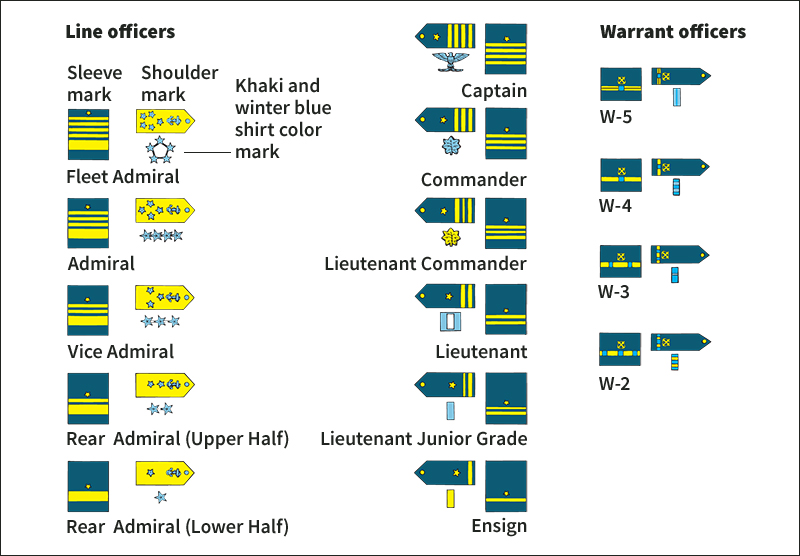Admiral is the highest rank in the navies of many countries. Most admirals command fleets or specially organized naval units called task forces or task groups.

There are four basic grades of admiral in the United States Navy. They are—from the lowest to the highest grade—rear admiral, vice admiral, admiral, and fleet admiral. A rear admiral wears the insignia of two stars and generally commands a task group. A vice admiral wears three stars and commands a task force. An admiral, with four stars, commands a fleet. The rank of fleet admiral carries five stars. It was created in 1944 and was held by four Americans in World War II—William F. Halsey, Ernest J. King, William D. Leahy, and Chester W. Nimitz.
The word admiral comes from the Arabic term amir-albahr, which means “commander of the sea.” The title of admiral was introduced into Europe during the Crusades (A.D. 1096-1500’s). In the United States, captains were the highest-ranking Navy officers until 1862, when the rank of rear admiral was adopted. David G. Farragut became the first person to hold this rank. He also became the Navy’s first vice admiral in 1864 and its first admiral in 1866. In 1899, Congress created the honorary rank of Admiral of the Navy for George Dewey, a hero of the Spanish-American War.
